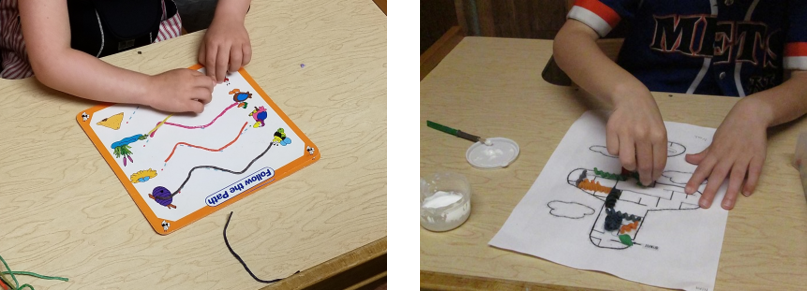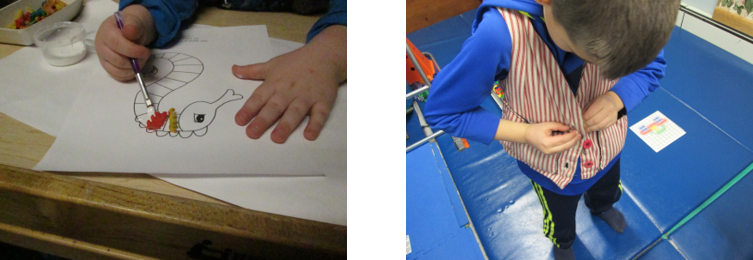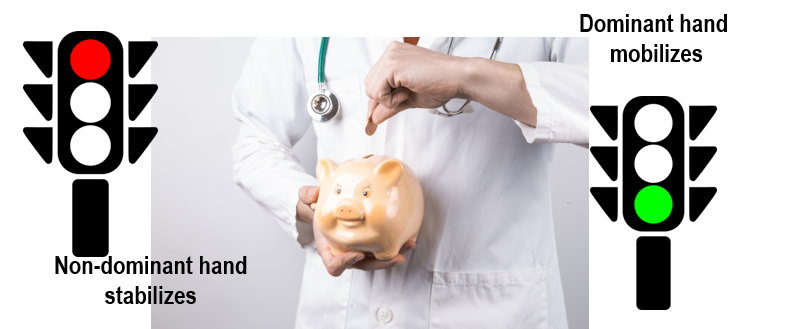The Motor Component
combines visual guidance with hand function skills

Fine motor skills develop throughout infancy and continue to develop through the teen years. Initial developmental skills with hand function are directed toward success with:
- simple grasp patterns
- the ability to separate fingers for object manipulation
- the ability to use both hands together
During the preschool years, grasp patterns mature to include recruiting vision with executive functions (attention and other skills) to plan and guide movements of the hands. This allows for more sophisticated activities that require use of both hands together.

At some point during these developing years, the hands learn to work together to manipulate pairs of objects such as paper and pencil, or a button and a button hole. Successful use of both hands working together requires a sequence of moves:

- One hand, typically the non-dominant hand, learns to pre-position one of the paired objects and holds it still in preparation for bringing both parts together. While this aspect of hand function is called stabilization, this skill emerges by incorporating attention with visual perceptual skills.
- The other hand, typically the dominant hand, is now needed to separate fingers for manipulation of the parallel object of the paired activity. This aspect of hand function is called mobilization, and again requires incorporation of both attention and visual perceptual skills.

- While the non-dominant hand positions and holds one part of the paired objects steady, the dominant hand manipulates the corresponding object so that both parts will fit together.
This step requires
- sustaining attention to task
- visualizing how the parts should fit together
- monitoring progress for mid-course corrections
The ability to perform these 3 steps efficiently represents a defining point in successful acquisition of fine motor skills.

One Response to “Fine Motor Skills Part 1”